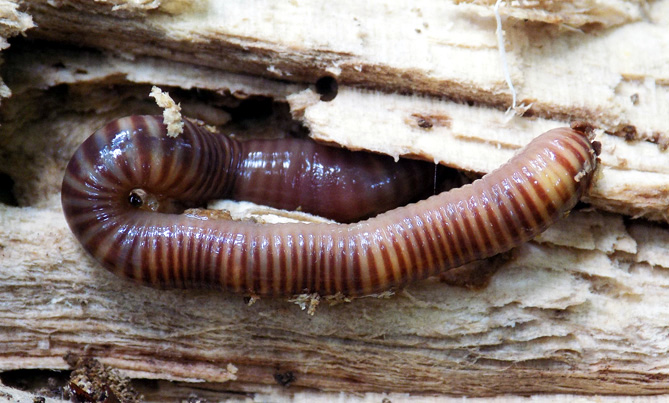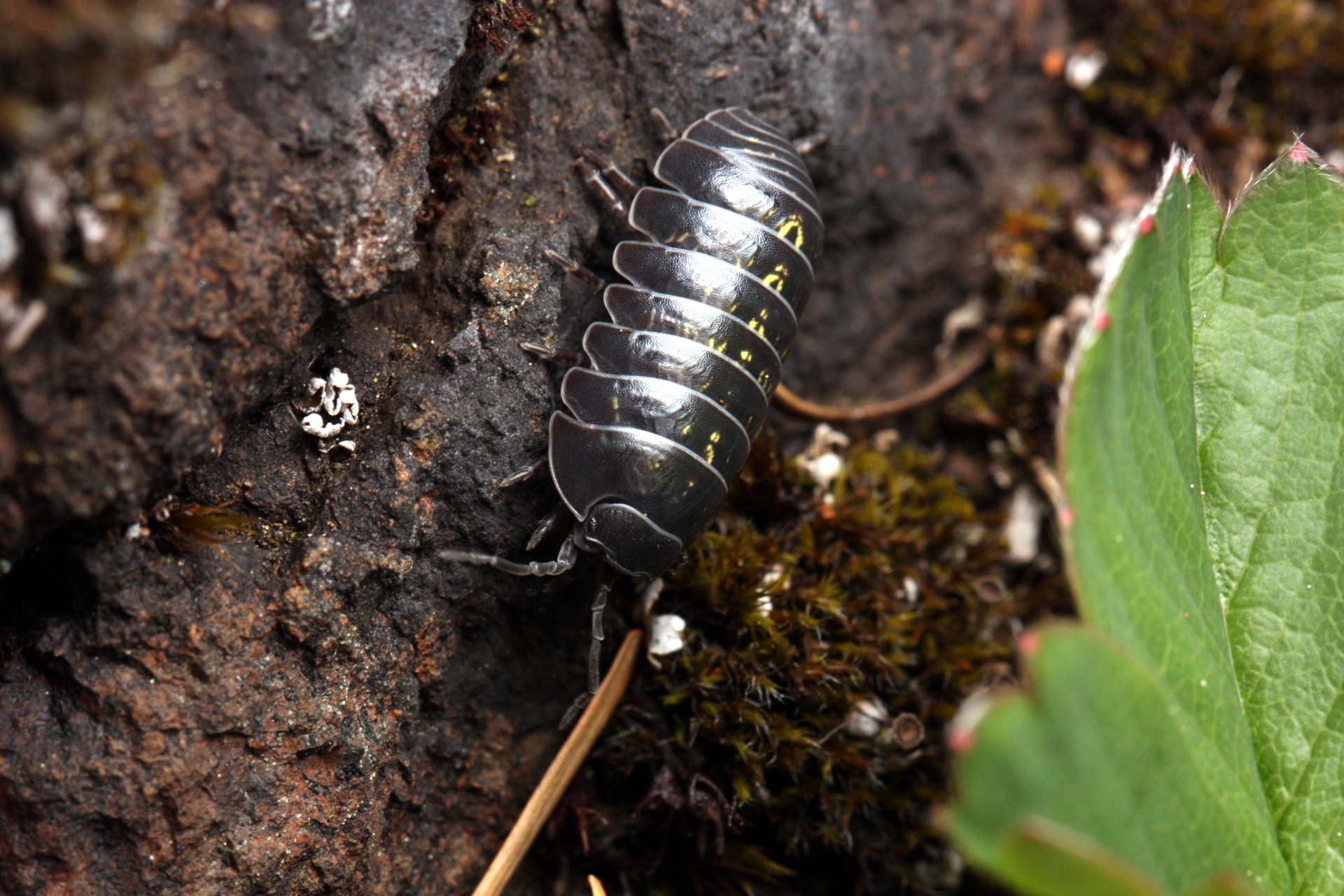
16 – Life in dead wood
At first sight, a decaying trunk that lays on the ground does not show signs of life. But if we look under the bark, into the rotting wood, we will see an unex-pectedly rich world inside. Swarms of small creatures are busy, in order to turn organic materials back to the cycle, providing nutrients that are accessible to plants. Fungi are the first decomposing organisms that appear. Their thin hyphae weave through the wood inside, constantly decaying the dead timber.

Under the bark of a dead wood we can find many arthropods: for some species it is a food source, and provides hiding place for others. Earthworms, woodlice, millipedes help decomposition processes, while centipedes, earwigs, and ground beetles use decaying trunks to hide. Many insects are known whose larvae develop in decaying wood, and participate in decomposition by chewing. Examples include longhorn beetles and rose chafers, and the European stag beetle.
The life cycle of beetles is known as a complete metamorphosis. It has 4 stages: egg, larval, pupal, adult.







Woodlice belong to decomposing organisms. When disturbed, they roll up into a small ball, and even hide their tentacles.






Due to their specific habitat needs, one fifth of the so-called saproxylic beetles (that feed on decaying wood) are threatened with extinction in Europe!

Did you know?
The red flat bark beetle spends nearly all its life under the bark of decaying trees. Due to its flattened shape, it can easily move in these narrow places. The larva feeds on decomposing wood, and undergoes more years of development. Interest-ingly, the beetle has some kind of natural ’antifreezer’ in its body, thus the imago can easily hibernate and then just thaws in spring.
